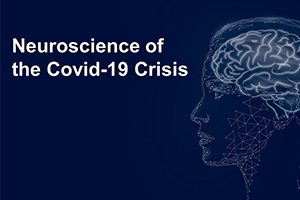“The psychological and emotional impact of the Covid pandemic has been described as the equivalent to surviving a car crash”
The shock of lockdowns – of interrupted working patterns and new working-from-home arrangements – has taken a toll. Many report feelings of tiredness, “brain fog” and even exhaustion. But what has really happened to us over the past 18 months or so, and how might we learn to cope better with these new, changed circumstances?
Eden McCallum invited Cristina Escallón to give a presentation on the neuroscience of hybrid working. Escallón is a highly regarded lecturer and consultant on leadership and neuroscience. Her talk revealed a wealth of detail about the psychological and emotional “car crash” of the Covid pandemic and its consequences.
Escallón began with a process known as a “check-in”, an exercise to gauge the mood and emotional state of a team or audience. This technique was developed in the aviation industry, as it turns out that accidents stem more often from problems in flight crews’ mindsets and mood than from mechanical failure. Once this was recognized, it became industry practice to ask employees to report regularly on how they are feeling.
And Escallón’s audience, a group of professionals invited by Eden McCallum, was feeling pretty tired and stressed, like so many others. But some also expressed gratitude, which has been the predominant emotion Escallón has observed through the whole pandemic, with every single group she has worked with (across all continents, industries and different socio-economic strata).
A fundamental principle of neuroscience, Escallón explained, is that humans instinctively want to move away from threats and towards rewards – but that fear of the bad is stronger than the appeal of the good. A tired brain worries and reacts more than a rested one. After 18 months of the pandemic, our brains are exhausted and less capable- emotionally, socially and cognitively. We need to retrain and rest.
In the field of neuroscience a well-established model, developed by David Rock of the Neuroleadership Institute, describes five key factors which activate threat or reward responses in the brain. It is known as the SCARF model, and the acronym is made up of five headings: Status, Certainty, Autonomy, Relatedness, and Fairness.
Read more on their website.

